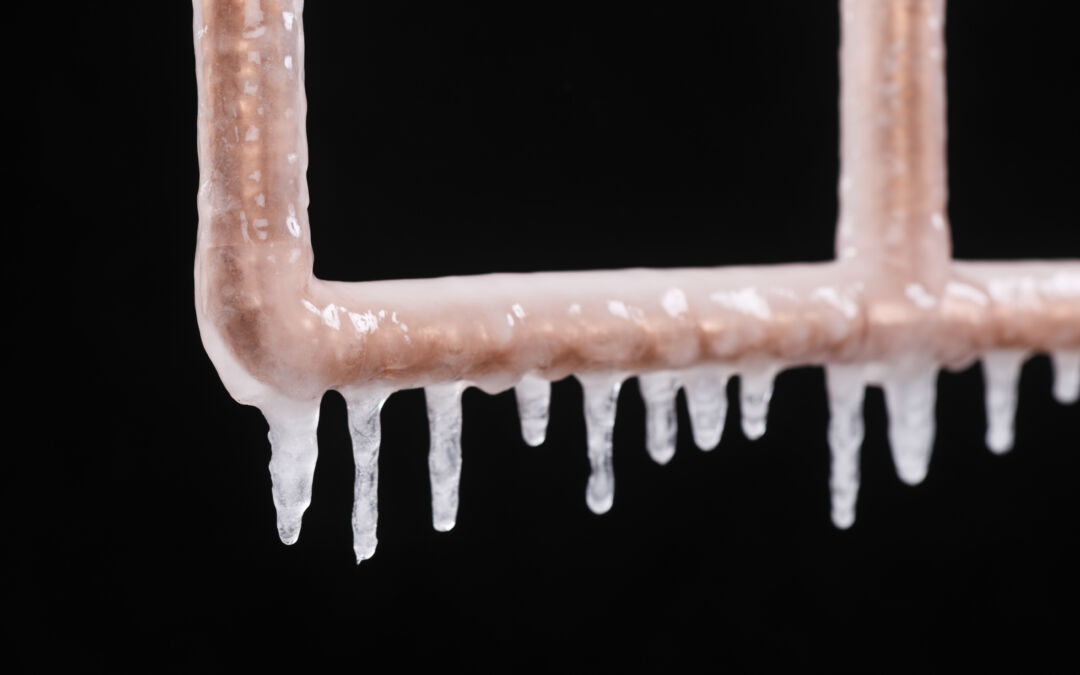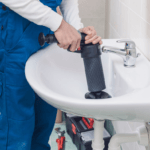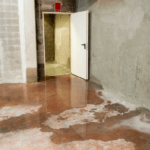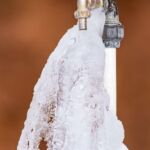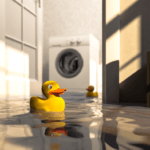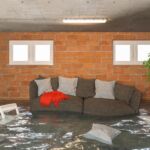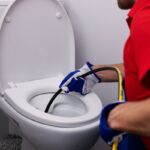The risk of your pipes freezing will increase as temperatures start to plummet, and frigid weather can cause your pipes to burst, which may result in water and property damage. This is one headache you must avoid because this kind of damage can cost you thousands of dollars, and the good news is there are a few simple steps you can take to keep your water running and your house dry.
Careful attention must be paid to the pipes in unheated interior spaces like basements, garages and attics, as these are most at risk. Pipes running through cabinets or exterior walls can also freeze, however, pipe insulation is an effective way to combat this problem. It is an affordable solution that can prevent the loss of your precious belongings, the cost of intense cleanup and the cost of your insurance deductible. Pipe insulation can be used liberally to protect any vulnerable pipes.
How to Beat the Cold
It is your responsibility to take the appropriate measures inside to keep your pipes warm and water running once the temperature starts to drop outside. If you don’t want to face a hefty repair bill, experts recommend doing the following:
- Keep your garage doors closed. This is a must at all times and is especially important if there are water supply lines in your garage.
- Open your kitchen and bathroom cabinet doors. This will allow warmer air to circulate around the plumbing and is very important if your sinks are on an exterior wall. Make sure you prioritize safety and remove all harmful cleaners and household chemicals to prevent children in the house from having access to them.
- Allow the cold water to drip from your faucet. This may sound like a waste, but allowing running water through the pipe will help prevent your pipes from freezing, and this is true even at a trickle.
- Keep your thermostat set to the same temperature. Do this during the day and night. It is not recommended that you set back your thermostat at night during a cold snap to save a few dollars on your heating bill.
- Take the necessary steps if you plan to be away during the winter. This includes leaving the heat on in your home because turning it off completely for several days while it is freezing outside can have negative consequences when you return from your trip. This step may go against your better instincts of conserving heat but this extra expense will be a lot cheaper than having to pay for a hefty repair bill once you return.
- Add insulation for the long term. This applies to attics, basements and crawl spaces. Insulation will help maintain higher temperatures in these areas. It is also recommended that you seal cracks and openings around your windows and doors to prevent drafts.
Can I Thaw Frozen Pipes?
If you turn on a faucet and only a trickle comes out, you may have a frozen pipe. If you suspect this to be the case, be careful when thawing them out because if your pipe has already burst, the water will come flowing out, and your home may experience a flood.
If you think your pipe is broken, turn off the water at the main shutoff valve, which is usually located at the water meter or where the main line enters the house. If you see water still running and no pipes have burst, take the following steps:
- Turn on the faucet. You want the water to able to flow through as you heat the frozen pipe and the ice plug starts to melt. Running water through the pipe will help melt the ice in your pipe, and this is true even if the running water is cold.
- Apply heat to the pipe. You can use an electric heating pad for this step, an electric hair dryer, or even a portable space heater. You can also try wrapping your pipes with towels soaked in hot water. Never use a blowtorch, a kerosene or propane heater, a charcoal stove or any device with an open flame because the high heat can damage your pipes or even start a fire.
- Apply heat until full water pressure is restored. If one pipe freezes, it’s highly likely for others to freeze as well. This is why you must check all other faucets in your home to determine if you have more frozen pipes.
- Contact a licensed plumber. If you cannot locate the frozen area or if the area is not accessible, it is a must that you contact a reputable plumber for help. The same is true if you cannot thaw the pipe or simply don’t feel comfortable doing this on your own.
- You can consider adding a space heater to a room in which the pipes are at risk, as this can provide you with supplemental heat. It is not recommended that you use a space heater in a bathroom, but if you really need one, make sure it is plugged into an outlet with a ground-fault circuit interrupter and do not use an extension cord.
The Dangers of Frozen Pipes
Frozen pipes can be very dangerous, and this is a serious matter that needs to be resolved. Homeowners must protect their home’s plumbing system against the dangers of frozen pipes to avoid damaged and burst pipes that may result in leaks and irreparable damage.
In addition to property damage, frozen pipes can also present a risk of injury and cost you a lot of money for repairs. Frozen water pipes can also shut off your water supply for several days which would be very problematic.
Get Your Frozen Pipes Repaired by the Best of the Best
Do you need frozen pipe repair? Tap Tech is ready to help! We offer emergency plumbing repair services and will make sure your home is not in danger of experiencing frozen water pipes whenever the temperature drops. We will help protect your plumbing system this winter, and you can contact us at any time to schedule an inspection of your pipes.

